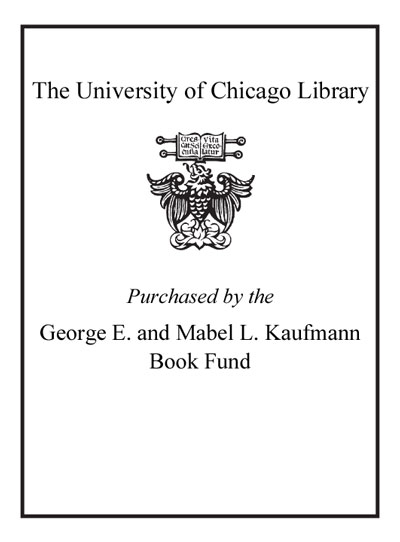Developing creativity in the primary school /
Saved in:
| Author / Creator: | Jesson, Jill. |
|---|---|
| Imprint: | Maidenhead, Berkshire ; New York : Open University Press/McGraw-Hill, 2012. |
| Description: | xii, 190 p. : ill. ; 24 cm |
| Language: | English |
| Subject: | |
| Format: | Print Book |
| URL for this record: | http://pi.lib.uchicago.edu/1001/cat/bib/9097024 |
Table of Contents:
- Preface
- Acknowledgements
- 1. What is creativity?
- Introduction
- Creativity through the ages
- The five creative behaviours
- So what is creativity?
- The characteristics of creativity
- Summary
- A personal view
- What are the benefits of creativity to groups and individuals?
- 2. Developing creativity in schools
- What are the problems with developing creativity in schools?
- The attributes of creative people
- How can creative characteristics be developed?
- Strategies for developing a more creative class
- Teacher as a role model
- Effective time management
- Planning for individual provision
- Making the most of the learning environment
- What blocks or enables the creative process?
- Intrinsic and extrinsic motivation
- Stages in the creative process and creative cycles
- Group creativity arid personal creativity
- Six Areas of Creative Endeavour (ACE)
- Areas of Creative Endeavour (ACE)
- 3. Teachers' personal and professional creativity
- What sort of creativity is needed by teachers?
- Personal creativity
- Professional creativity
- The ability to ask questions
- The ability to make connection
- The ability to see things in new ways
- The ability to explore ideas
- The ability to reflect
- The characteristics of creative teachers
- Recognising individual teacher creativity
- Assess your potential
- Creative skills audit
- 4. Developing teacher creativity
- Developing teacher creativity in each Area of Creative Endeavour (ACE)
- Technological
- Artistic
- Mathematical
- Linguistic
- Physical
- Natural philosophical
- Developing the creativity of all school staff
- Developing the professional creativity of individual teachers
- Developing the professional creativity of a staff team
- Suggestions for head teachers to encourage their staff
- 5. Group creativity
- Factors affecting individual and group creativity
- Personal creativity
- Creativity in a social context
- Who decides what is creative?
- Assessing creativity
- Is it even possible to assess creativity?
- Who should assess?
- Why and when should creativity be assessed?
- What should be assessed?
- What should be done with the assessments?
- Developing creative thinking
- Using Bloom's taxonomy of thinking skills
- Metacognition
- 6. Developing group creativity
- Developing questioning and thinking skills
- Philosophy for Children (P4C)
- Community of Enquiry
- Cognitive Acceleration (CA)
- TASC (Thinking Actively in a Social Context)
- Helping groups make connections
- Lateral thinking
- Random Input association
- Odd one out
- The Creative Problem Solving process (CPS)
- ACTS (Activating Children's Thinking Skills)
- Brainstorming
- Concept mapping
- Mind maps
- Helping groups to see things in new ways
- Synetics
- Six thinking hats
- Treasure chests
- Helping groups to explore ideas
- Thought experiments
- SCAMPER
- Build it better
- Exploring design
- Helping groups to develop reflective skills
- A helping hand
- Object analogy
- IT prompts
- Reflective diagrams and charts
- Developing creativity in each ACE
- 7. Personal creativity
- What is involved in personal creativity?
- What is required to develop personal creativity?
- Approaches to learning in school
- Maslow's hierarchy of needs
- Multiple Intelligence Theory (MI)
- Learning styles theory
- Experiential learning theory
- Accelerated and brain-based learning
- Learning Power
- Building Learning Power
- The Effective Lifelong Learning Inventory (ELLI)
- 8. Developing personal creativity
- Moving from group to personal creativity
- Scaffolding by the teacher
- Personalizing the curriculum
- Personalized learning
- Encouraging personal interests
- Personal projects
- Varying ways to record learning
- Creativity and differentiation
- Using ICT for personal creative development
- Developing personal creativity in the six Areas of Creative Endeavour
- 9. Creativity across the curriculum
- The creative curriculum
- Creative teaching, creative learning and teaching for creativity
- Investigative Learning
- Project- and problem-based learning
- Enquiry based learning (EBL)
- Case study: Reggio Emilia
- Enterprise Education
- Mantle of the expert
- 10. Developing creativity across the curriculum
- Using ICT to develop creativity across the curriculum
- Questioning and challenging
- Making connections and seeing relationships
- Seeing things in new ways and envisaging what might be
- Exploring ideas, keeping options open
- Reflecting critically on ideas, actions and outcomes
- Suggestions for practice
- 11. Developing creativity through subject teaching
- Creative teaching and learning through Literacy
- Creative teaching and learning through Maths
- Creative teaching and learning through Science
- Creative teaching and learning through Design Technology (DT)
- Creative teaching and learning through History
- Creative teaching and learning through Geography
- Creative teaching and learning through Art and Design
- Creative teaching and learning through PE
- Creative teaching and learning through Modern Foreign Languages
- Creative teaching and learning through Music and Drama
- Creative teaching and learning through RE and Citizenship Education (CE)
- Creative teaching and learning through ICT
- Appendices
- References
- Index

